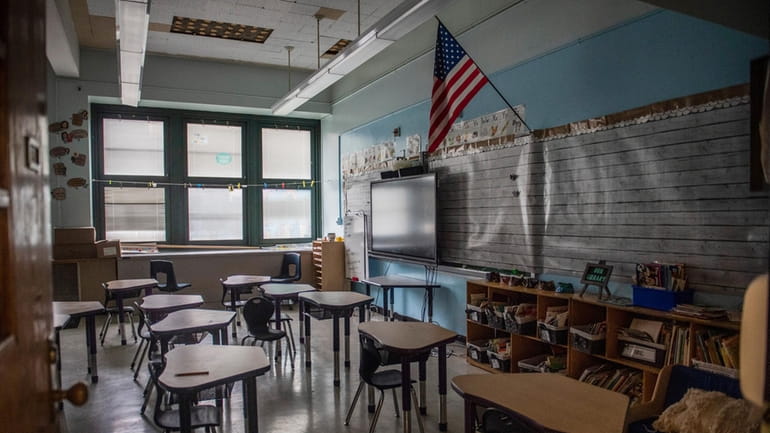Absenteeism in schools is a growing problem

Recent studies show that chronic absenteeism remains a pervasive problem in schools, including in districts across Long Island. Credit: AP/Brittainy Newman
When did attending school become optional?
The answer seems simple: It's not. New York has a compulsory attendance law, requiring anyone ages 6 to 16 to attend school. Students can be home-schooled, of course, but they can't just stay home.
Yet too often, they do.
Recent studies show that four years after COVID-19 shut our schools, chronic absenteeism remains a pervasive problem, including in school districts across Long Island.
Defined as missing at least 10% of the school year, or 18 days, chronic absenteeism was once a rarity that most parents, teachers and schools took extraordinarily seriously.
But statistics from the conservative-leaning American Enterprise Institute show that approximately 26% of public school students across 38 states and Washington, D.C. were chronically absent during the 2022-2023 school year. That's compared with 15% in the 2018-2019 school year.
While AEI doesn't yet have complete attendance data for every state — including New York — its analysis of available district data shows disturbing trends. In more than two dozen Long Island school districts, at least one in five students was chronically absent last year, a significant jump from five years ago.
It's happening nationwide in districts of all sizes, at all income levels, in families of all types. Poor communities are suffering more, but they're not the only ones.
Another troubling problem: Too many parents and caregivers don't care.
A University of Southern California study found that among parents and caregivers whose children missed 10 days in the first semester of the 2023-2024 school year, fewer than half said they were concerned. Of parents and caregivers whose children missed six to 10 days of school, just 29% said they were concerned. And, researchers noted, it's likely parents were underreporting their children's absences.
The most damning statistic is that nearly a third of those surveyed said they weren't worried about their children's absences because “everything their child needs to know is available online.”
That's an alarming view that could damage our children for years to come. It represents another massive shift in a post-COVID-19 world in which our view of schooling, teachers, in-person learning, and the value of connections made in and out of the classroom has turned upside down. It's a world in which sending our children to school suddenly is no longer the norm for all and where the broader connection between parents and schools that facilitates our children's education is weakened.
Parents who've chosen to home-school are similarly rejecting traditional educational norms. The number of students being home-schooled on Long Island has tripled since 2010 to more than 3,700 last year, according to a Newsday analysis. That's in part a response to vaccination requirements and school curricula to which parents object. Such so-called “parental choice” decisions similarly push against educational institutions and professionals.
But that's different from not attending school at all.
Long Island often touts its schools as the best of the best. And many are. But if kids don't go to school, having the best schools won't mean anything.
Ending the chronic absenteeism crisis will require multiple pathways, from coaxing back the cavalier parent who's choosing a vacation above school time, to providing for kids with broader mental health and other needs, to working with families who have real financial worries and other concerns.
But there's also a larger problem: Educating a child requires a partnership among schools, administrators, teachers, parents and the student. A fissure in that relationship will be difficult to fix.
Columnist Randi F. Marshall's opinions are her own.

